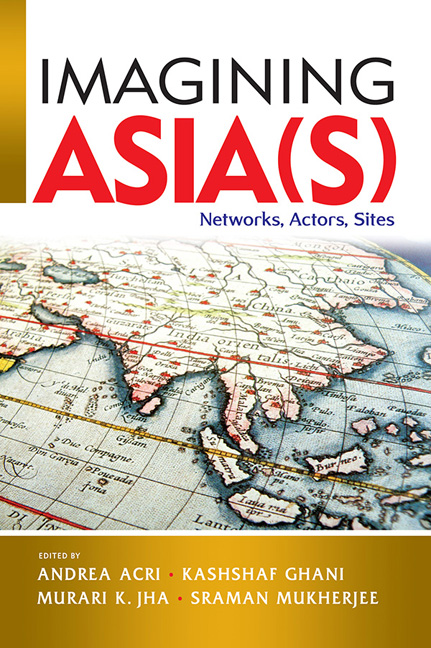Book contents
- Frontmatter
- Contents
- List of Contributors
- Introduction
- Part I Conceptualizing the Region: Past and Present
- Part II Conceptualizing Asia through the Prism of Europe
- Part III Networks of Knowledge Across the Indian Ocean
- Part IV Histories and Geographies of Pilgrimage in Asia
- 8 Transmissions, Translations, Reconstitutions: Revisiting Geographies of Buddha Relics in the Southern Asian Worlds
- 9 The Politics of Pilgrimage: Reception of Hajj among South Asian Muslims
- Part V Trans-Local Dynamics and Intra-Asian Connections across Space and Time
- Index
9 - The Politics of Pilgrimage: Reception of Hajj among South Asian Muslims
from Part IV - Histories and Geographies of Pilgrimage in Asia
Published online by Cambridge University Press: 31 January 2020
- Frontmatter
- Contents
- List of Contributors
- Introduction
- Part I Conceptualizing the Region: Past and Present
- Part II Conceptualizing Asia through the Prism of Europe
- Part III Networks of Knowledge Across the Indian Ocean
- Part IV Histories and Geographies of Pilgrimage in Asia
- 8 Transmissions, Translations, Reconstitutions: Revisiting Geographies of Buddha Relics in the Southern Asian Worlds
- 9 The Politics of Pilgrimage: Reception of Hajj among South Asian Muslims
- Part V Trans-Local Dynamics and Intra-Asian Connections across Space and Time
- Index
Summary
INTRODUCTION
The rise of British colonialism in the eighteenth century witnessed a simultaneous decline in the political fortunes among Muslims in South Asia. The loss of authority—both political and social—following the dissolution of the Mughal Empire came as a rude shock to the community from which it struggled to recover throughout the nineteenth century. It was from the late nineteenth and early twentieth century that Muslims across South Asia started manifesting signs of political and social awareness as a community. One of the contributing factors was the rise of print culture in the 1870s, which, in spite of its delayed reception by South Asian Muslims, was a major turning point shaping their socio-political attitude. Print provided them with the technological tool with which the community could aspire to connect with Muslim societies beyond their immediate homeland, and in turn express themselves as an integral part of the global Muslim ummah (Robinson 1993).
This idea of self-consciousness not only manifested itself within the educated Muslim elite of north India, led by individuals like Syed Ahmed Khan, but almost equally among Muslims in Bengal. The region proved to be the bridgehead to British presence in South Asia after the fall of the Bengal Nawabs in 1757. Bengali Muslims, now concentrated largely in Bangladesh and the Indian state of West Bengal, constitute one of the largest ethnic communities of Muslims after the Arabs (Ahmed 1996; Eaton 1993). In the run up to the First World War in the early twentieth century, Muslims worldwide, particularly across South Asia, failed to hide their anxiety over a weakening Ottoman Turkish Empire facing the European onslaught. The consequences of this weakness would be dual. First, it pushed into uncertainty the fate of the Islamic Caliphate whose seat was the Ottoman capital at Ankara. Second, growing British presence in a conflict-ridden Hejaz made Turkey's position precarious as the Khadim ul Haramayn ul Sharifayn (Servitor/Protector of the Two Holy Sanctuaries of Mecca and Medina).
In the following discussion I will explore how Bengali periodicals, particularly two—Sultan and Ahl-i Hadith—served as important mediums in keeping Bengali Muslims informed on the course of events around Turkey and the Hejaz. These periodicals, along with other media carrying news on the volatile situation in West Asia, made it possible for Bengali Muslims to overcome their limitation to access printed news in Urdu and English.
- Type
- Chapter
- Information
- Imagining Asia(s)Networks, Actors, Sites, pp. 251 - 272Publisher: ISEAS–Yusof Ishak InstitutePrint publication year: 2019

